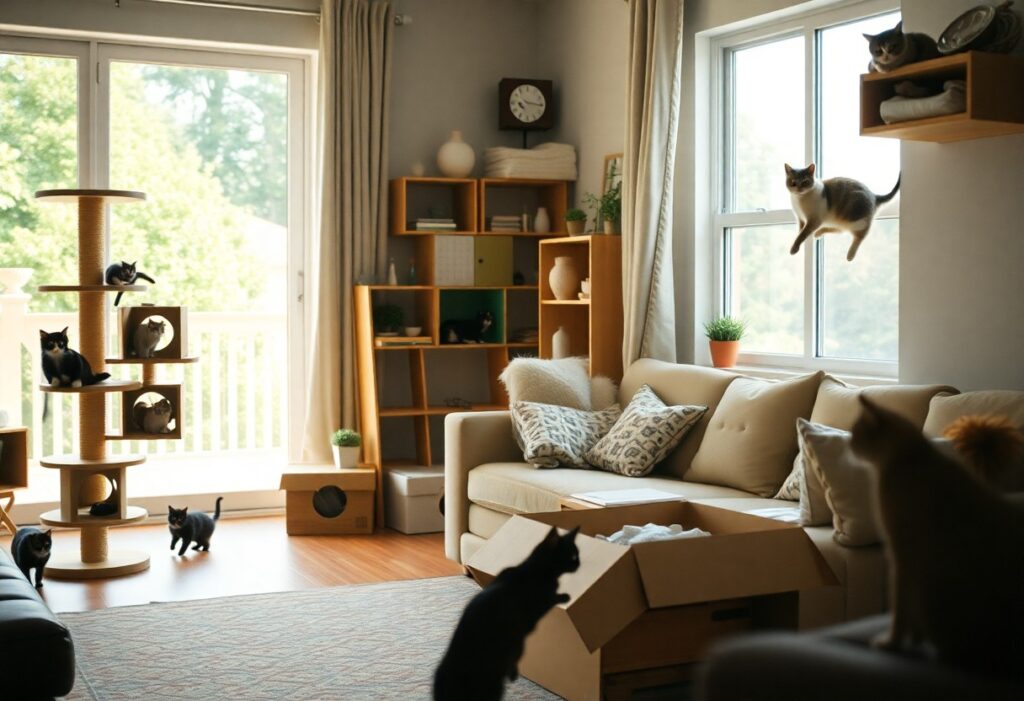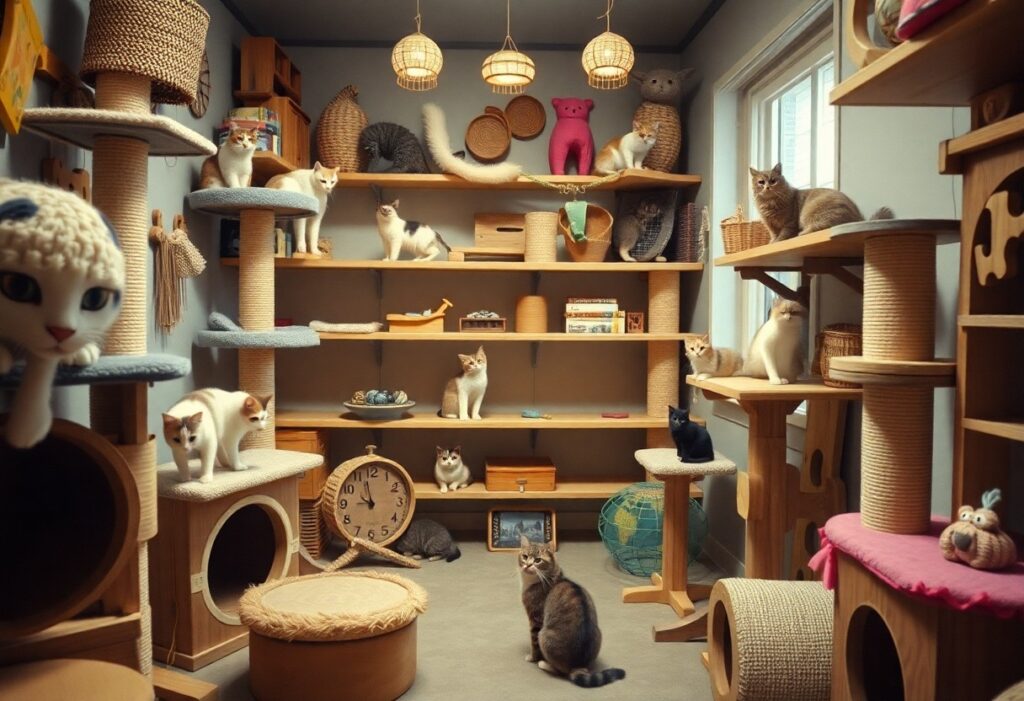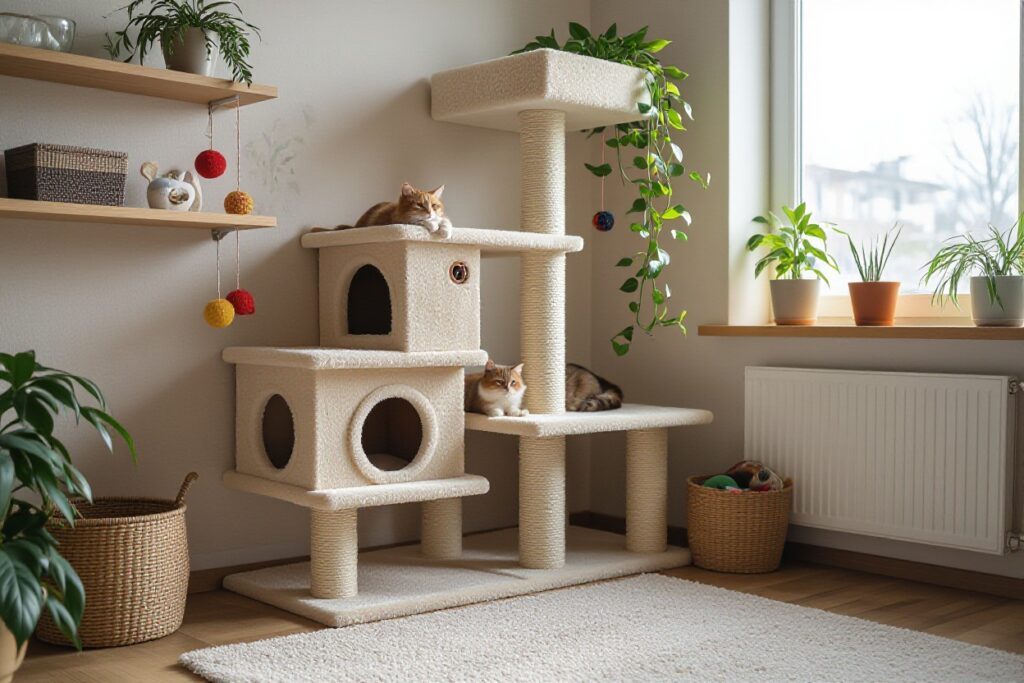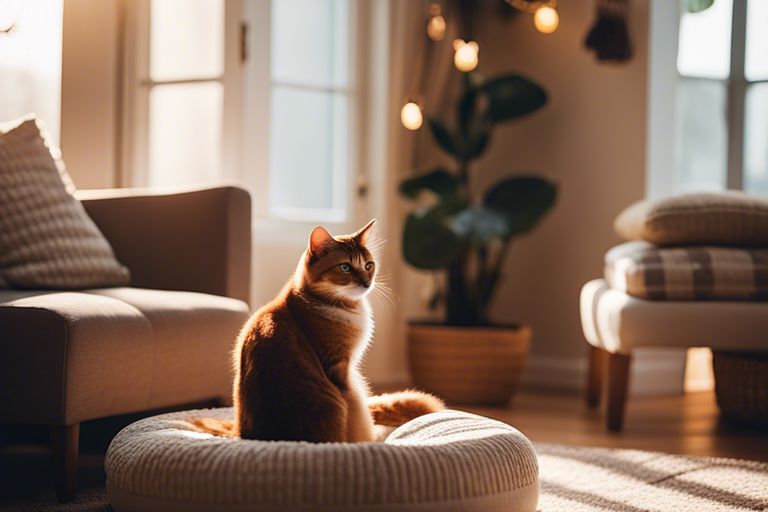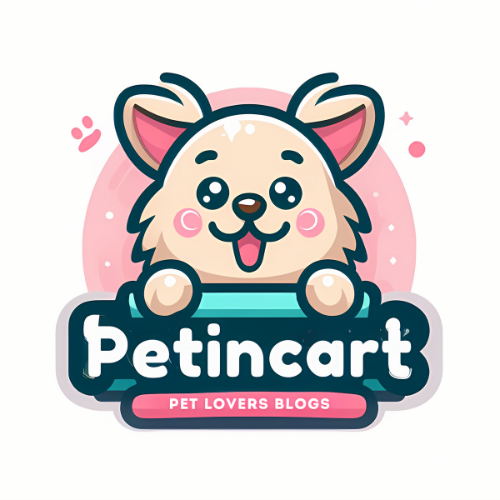Many cat owners struggle with keeping their furry friends entertained indoors. Boredom can lead to behavioral issues such as scratching and aggression, making it necessary to create stimulating activities that engage your cat’s curiosity. In this guide, you’ll learn how to design your own fun and interactive indoor challenges, utilizing simple materials and creative ideas that cater to your cat’s unique personality. Let’s examine the world of feline fun and discover how you can provide the mental stimulation your pet needs to thrive indoors!
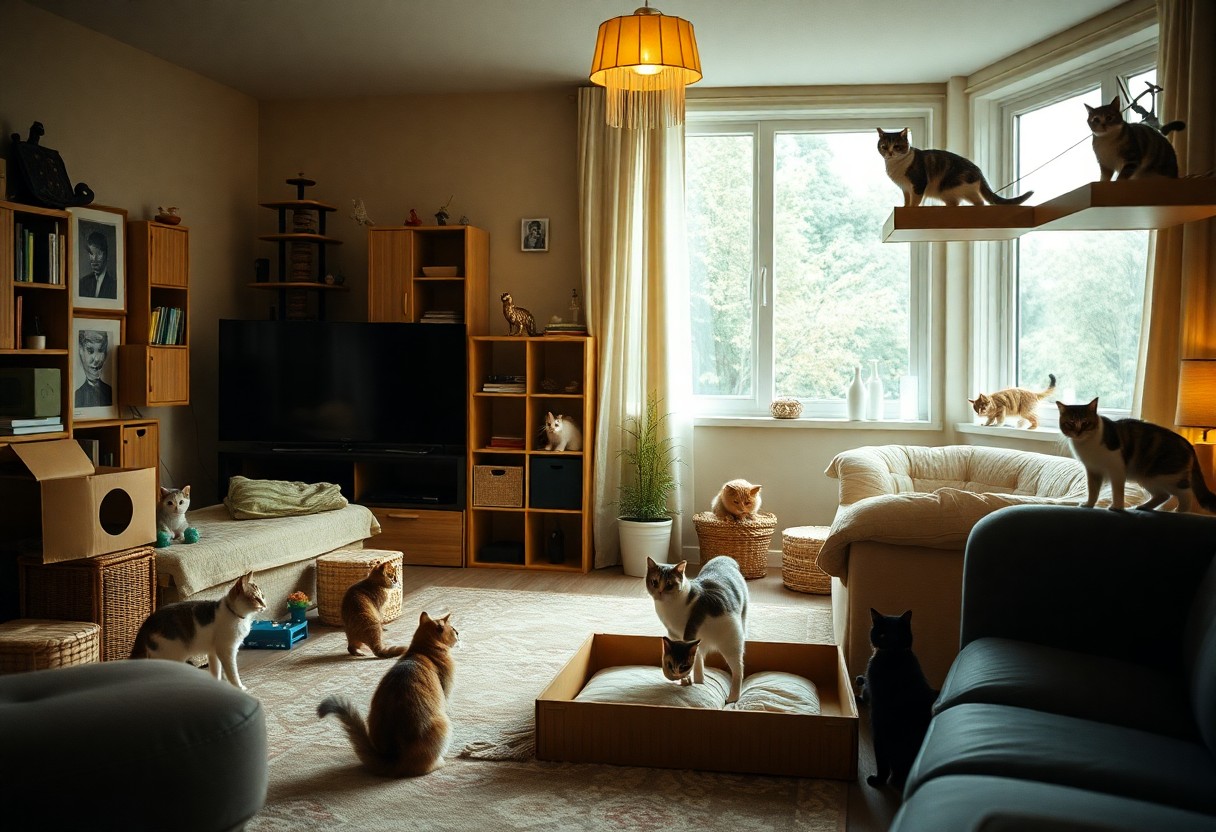
Key Takeaways:
- Create a stimulating environment by incorporating various textures, heights, and hiding spots to encourage exploration and play.
- Utilize interactive toys, puzzles, and DIY projects to engage cats mentally and physically, preventing boredom.
- Schedule regular playtime with your cat and rotate toys to maintain their interest and excitement in indoor activities.
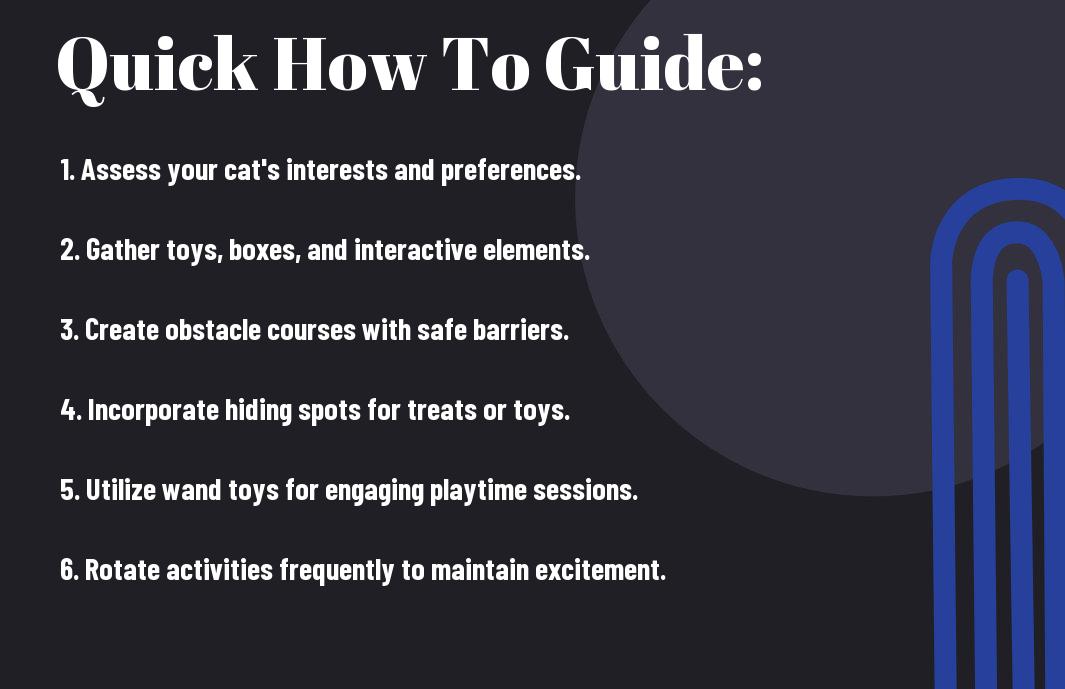
Understanding Your Cat’s Needs
For effective indoor activity design, it’s important to understand your cat’s unique needs and preferences. Each cat has its own personality and energy levels, which influence how they engage with their environment. By observing their behavior, you can tailor activities that not only entertain but also enrich your cat’s life, ensuring they remain happy and healthy.
Recognizing Boredom in Cats
Cats can exhibit various signs of boredom, such as increased vocalizations, destructive behavior, or a lack of interest in toys and activities. If you notice your feline friend sleeping more than usual, or staring intently at walls and corners, it may be time to introduce new stimuli to keep their boredom at bay.
Importance of Mental and Physical Stimulation
With a proper balance of mental and physical stimulation, your cat can lead a more fulfilling life. Without these elements, they may become lethargic and frustrated, which can lead to behavioral issues. Engaging activities prevent health risks associated with obesity and keep their minds sharp.
For instance, incorporating activities such as puzzle feeders can stimulate your cat’s intellect while helping to maintain a healthy weight. Likewise, climbing structures can provide both exercise and a space for your cat to explore. By ensuring your cat stays active, you promote their overall well-being, stave off boredom, and foster a more harmonious home environment. Engaging indoor activities can turn your home into a vibrant playground for your furry friend.
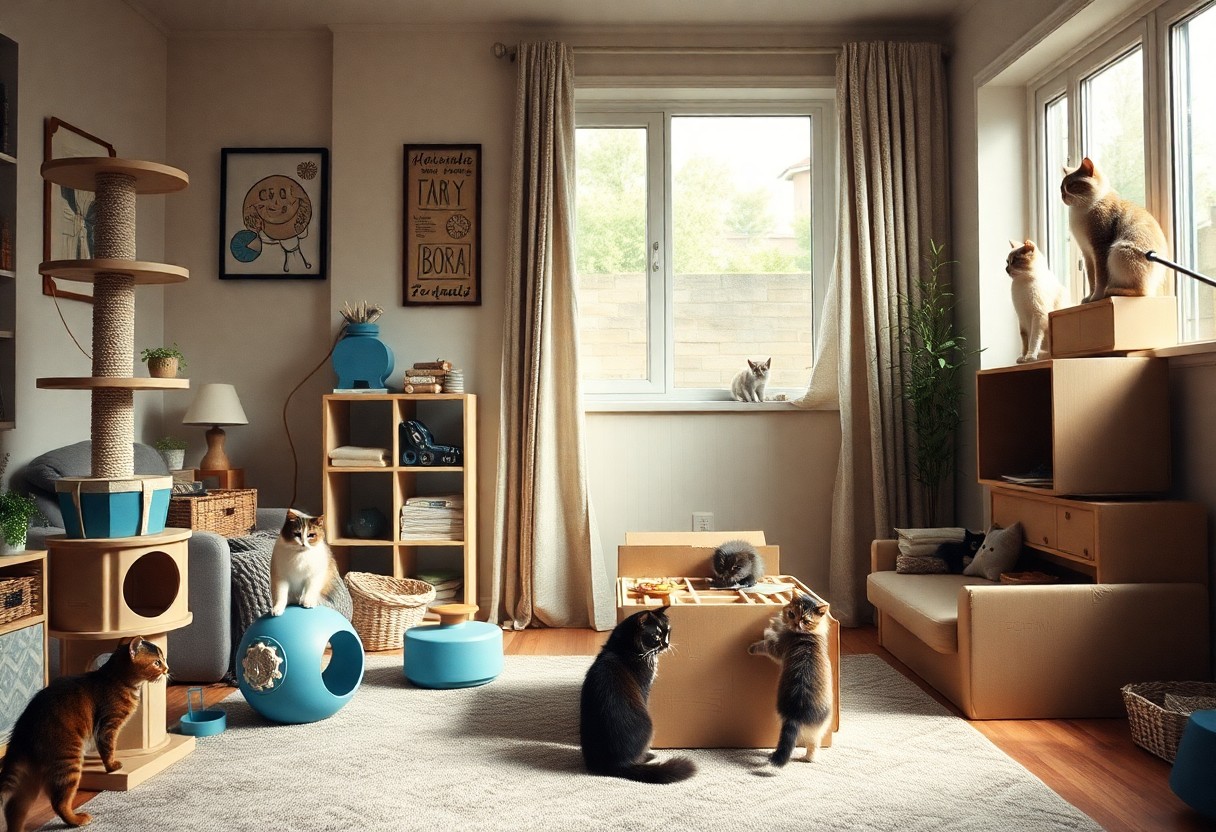
Factors to Consider in Activity Design
You want to create enriching indoor activities that cater to your cat’s unique needs. To design effective play experiences, consider the following factors:
- Cat’s age
- Energy levels
- Personality traits
- Play preferences
Thou will find that taking these factors into account will lead to more engaging and satisfying experiences for your feline friend.
Cat’s Age and Energy Levels
Consider your cat’s age and energy levels when planning activities. Kittens are typically more energetic and playful, requiring stimulating challenges, while older cats may prefer calmer, less demanding activities that still encourage mild exercise and mental engagement.
Personality and Play Preferences
One important aspect of activity design is understanding your cat’s personality and play preferences. While some cats enjoy interactive games that involve chasing or pouncing, others may prefer solitary activities that allow for more independent exploration.
Design your activities based on whether your cat is more of a predator or a observer. For instance, if your cat loves to hunt, use toys that mimic prey, like feather wands, to engage their natural instincts. Conversely, for those who enjoy observing, consider setting up window perches or interactive feeders that allow them to watch the world go by. It’s important to provide variety and regularly switch up the activities to keep your cat interested and excited.
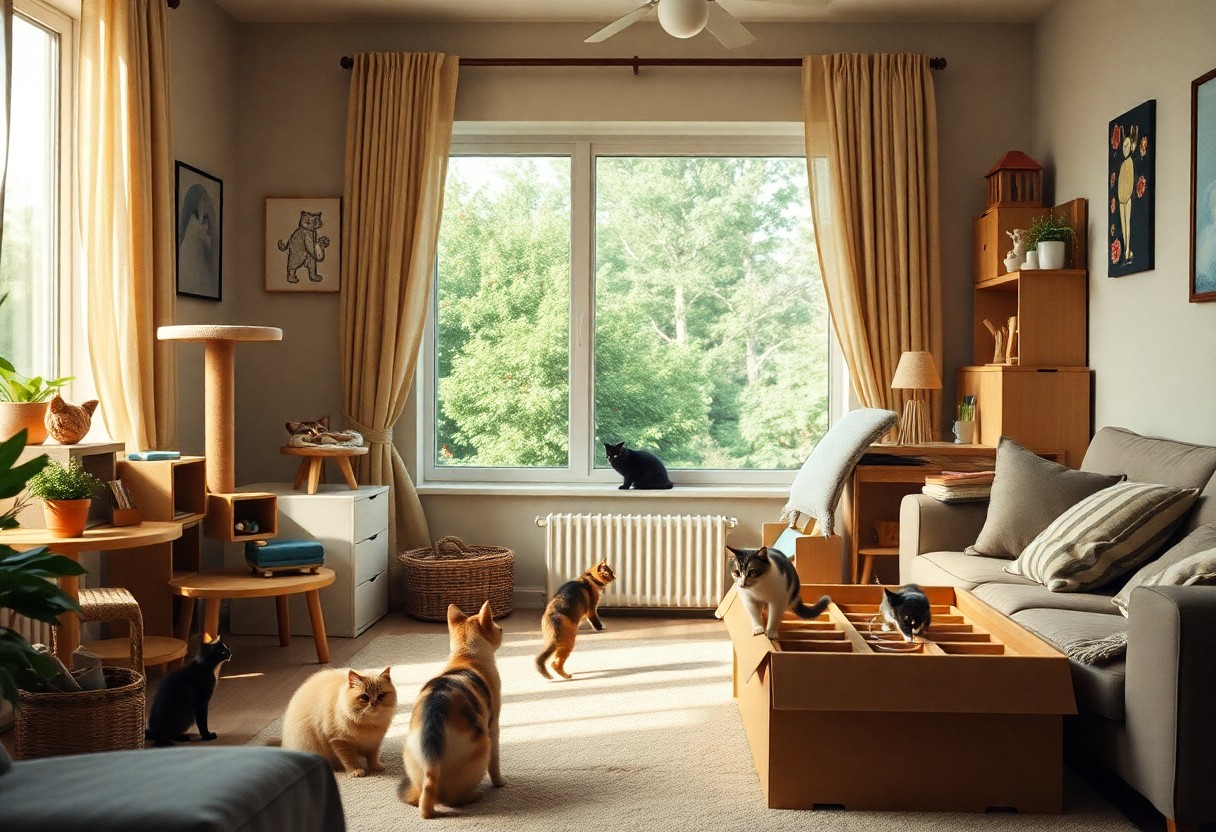
How-to Create Engaging Indoor Activities
To keep your cat entertained and active indoors, you have to think outside the box and tailor activities to suit their natural instincts. Engaging your feline friend in play can stimulate their mental and physical well-being. Utilize various methods, from simple household items to specialized interactive toys, that will captivate your cat’s attention and promote healthy behaviors.
Utilizing Everyday Household Items
Now, you can transform items around your home into exciting playthings for your cat. Use crumpled paper, cardboard boxes, and even old socks to create new experiences. For example, a cardboard box can become a secret hideout or a launching pad for adventurous leaps. Just ensure that the materials are safe and non-toxic for your pet, avoiding small parts that may pose a choking hazard.
Incorporating Interactive Toys
How-to enhance your cat’s playtime with interactive toys is straightforward but impactful. These toys can stimulate your cat’s hunting instincts and provide hours of entertainment.
Items like laser pointers, feather wands, and treat-dispensing puzzles are excellent choices. Laser pointers encourage your cat to chase and pounce, while feather wands mimic the movement of prey. Treat-dispensing puzzles challenge your cat’s problem-solving skills and reward them with delicious treats. Always supervise your cat during playtime and choose toys that are durable to prevent accidental ingestion of any parts.
Tips for Keeping Activities Fresh and Exciting
Now, it’s crucial to keep your cat engaged with a variety of stimulating activities. Here are some tips to ensure excitement:
- Introduce new toys regularly
- Change play locations to stimulate curiosity
- Incorporate new scents to pique interest
- Vary the intensity of the activities to keep things dynamic
Recognizing your cat’s preferences will help you create an ever-changing and fun environment for them.
Rotating Activities
Any time you introduce activities for your cat, rotation is key to maintaining interest and excitement. Swap out toys every few days and change the setup of their play space. By keeping things fresh, your cat won’t lose interest and will likely remain enthusiastic about their playtime.
Observing and Adjusting to Your Cat’s Reactions
Some cats have specific likes and dislikes when it comes to play. Pay attention to their reactions during activities. If your cat seems disinterested, it might be time to alter your approach. Watch for signs of excitement or boredom, such as tail movements or engagement levels.
It’s vital to adapt your activities based on your cat’s preferences. If certain toys spark enthusiasm while others are ignored, you should focus on what captivates their attention. Adjust the intensity, duration, and type of activities according to your observations. Always prioritize your cat’s well-being by ensuring that the activities are safe, as overly strenuous play or dangerous items can lead to harm. By valuing your cat’s cues, you can create a vibrant and fulfilling indoor play experience.
Importance of Supervised Playtime
Keep in mind that supervised playtime is vital for your cat’s well-being. Engaging with your cat during provided activities not only stimulates their mind but also allows you to observe their behavior. This interaction helps in identifying any potential issues early on, ensuring a healthy and active lifestyle for your feline friend. By spending quality time together, you can significantly enhance your cat’s happiness and overall health.
Safety Considerations
Safety is the first priority when designing indoor activities for your cat. Always ensure that the environment is free from hazards, such as toxic plants, small objects that can be swallowed, or sharp edges. Opt for safe toys specifically designed for cats, and regularly inspect them for wear and tear. By creating a secure play area, you help prevent accidents and provide a nurturing space for your cat to explore.
Building Trust and Bonding
On a deeper level, engaging in supervised playtime builds trust and strengthens the bond with your cat. The shared experiences during play create positive associations between you and your feline companion, fostering a sense of security. When they see you being involved and attentive, it can significantly enhance their emotional well-being. Your presence reassures your cat that they can rely on you, making them feel safe and cared for.
Another key aspect of bonding is the positive reinforcement that occurs during playtime. When you participate in activities together, you pave the way for increased affection and better communication between you and your cat. Cats are highly observant; by interacting with them, you let them know that their actions are valued, and this enhances their overall trust in you. The emotional connection that flourishes through these playful interactions not only boosts your cat’s confidence but also transforms your relationship into one that is characterized by mutual understanding and affection.
Long-term Engagement Strategies
Your cat’s happiness and mental stimulation can significantly benefit from long-term engagement strategies. By incorporating regular activities and an enriching environment, you can keep your feline friend entertained and engaged for years to come. This approach not only alleviates boredom but also promotes their physical and mental health, making for a happier, healthier cat overall.
Regularly Scheduled Playtime
With consistency in your cat’s play schedule, you’ll provide them with a sense of routine that they thrive on. Set aside specific times each day dedicated to interactive play, allowing your cat to anticipate this bonding experience. Using toys or engaging in activities that cater to their hunting instincts will keep them excited and stimulated during these sessions.
Creating an Enriching Environment
Now, it’s time to transform your living space into an adventure zone for your cat. This means providing diverse experiences that spark their curiosity and allow for natural behaviors. Incorporating things like scratching posts, climbing structures, and interactive toys will not only promote physical activity but also unleash your cat’s innate instincts.
Longterm, your efforts in creating an enriching environment will yield benefits that enhance your cat’s quality of life. Carefully select safe and sturdy furniture, add perches or shelves for climbing, and provide areas for hiding and exploring. Consider rotating toys to keep things fresh, and include puzzle feeders to challenge their minds. Make sure to avoid potentially dangerous items such as dangling cords or small pieces that can be swallowed, ensuring a secure and stimulating environment tailored just for your feline companion.
Final Words
Upon reflecting on how to design exciting indoor activities for bored cats, it’s imperative to integrate stimulation into their daily routines. You can create engaging experiences by incorporating various toys, puzzles, and interactive games that cater to your cat’s natural instincts. By establishing a consistent playtime and rotating activities, you can keep your feline friend entertained and mentally stimulated. Ultimately, your efforts in crafting a dynamic environment will lead to a happier, healthier cat, ultimately enhancing your bond and shared enjoyment of life together.
FAQ
Q: How can I tell if my cat is bored?
A: Signs of boredom in cats can include excessive sleeping, lack of interest in play, over-grooming, and engaging in destructive behavior. Additionally, if your cat is vocalizing more than usual or following you around aimlessly, these can also be indicators of boredom. Observing your cat’s behavior and energy levels can help you determine if they need more stimulation.
Q: What materials can I use to create indoor activities for my cat?
A: You can use a variety of materials to create exciting indoor activities. Commonly found items include cardboard boxes, paper bags, string, feathers, and catnip. You can also repurpose old toys or use household items like bottle caps and crumpled paper. The goal is to use something that can engage their attention and encourage them to play.
Q: Are there specific games I can create for my cat at home?
A: Yes, there are many fun games you can set up! One popular option is hide-and-seek with treats; hide small treats around the house for your cat to find. Another idea is to create a DIY “fishing” game with a wand and a toy attached to a string. You can also make a puzzle feeder by placing food in a cardboard box with holes cut out, requiring your cat to figure out how to get to the food.
Q: How can I incorporate exercise into my cat’s indoor activities?
A: Incorporating exercise can be done through interactive play. Use a laser pointer, feather wand, or toy that mimics prey-like movement to encourage your cat to chase and pounce. Setting up obstacles or creating a small agility course with furniture and boxes can also stimulate your cat both mentally and physically. Regular timed play sessions can help ensure your cat gets sufficient exercise.
Q: How often should I change or rotate indoor activities for my cat?
A: It’s beneficial to change or rotate activities every few days to keep your cat engaged and prevent them from losing interest. Regularly introducing new toys, moving existing ones to different locations, or altering the way you present games can enhance their playtime experience. Pay attention to your cat’s responses and adjust the activities based on their preferences and interests.
